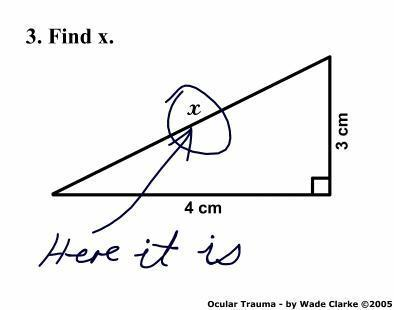Here’s today’s proposition: There are times in working and personal situations where open-ended (unsupported) questions can unintentionally sabotage and seriously derail the communication.
A real example:
The division sales manager at a major petroleum refinery in Canada (we’ll call him Jerome) was in a training course on skills, tools & techniques for brainstorming & creative problem-solving. On the first day of the class the trainer explained why open-ended questions can be destructive when no one has the answer. Jerome became very upset because he had been taught that asking questions was the best way to manage customer conversations, the people who worked for him, and in other situations:
- Apparently, one day Jerome went to Natasha and told her they needed to sell an inventory of XYZ, a by-product of the refining process that was highly profitable but was only valuable to a few players across a number of industries. He said the inventory had been sitting for weeks and was running up serious internal warehousing charges. Natasha said of course she would sell it and continued her work. Now, here’s where an open-ended question totally backfired for both of them.
- About two weeks later Jerome got a call from a potential customer with whom he’d been trying to get a foot in the door for quite some time. The person asked if Jerome had any XYZ because their regular supplier had screwed up and had not delivered in time to continue production of one of their products. The customer hinted that if Jerome could provide some XYZ he would become an approved supplier. Naturally, this made Jerome very excited.
- Jerome ran down the hall to Natasha and asked an unsupported open-ended question; “Did you sell that inventory of XYZ I asked you to sell??” [DANGER WILL ROBINSON! Jerome had unknowingly forced Natasha to play a no-win game called "Guess What’s In My Head"!].
- Natasha assured Jerome that of course she had sold it.
- A deflated Jerome had to tell the prospective customer that one of his best sales people had sold their last amount of XYZ .
In examining the  interchange during the class Natasha revealed that she thought Jerome wanted her to say yes, so that’s what she had done. She had then proceeded to quickly sell the XYZ to one of her customers (Jerome’s request had slipped her mind).
interchange during the class Natasha revealed that she thought Jerome wanted her to say yes, so that’s what she had done. She had then proceeded to quickly sell the XYZ to one of her customers (Jerome’s request had slipped her mind).
Why did this happen? It happened because, as the aphorism states: “When all you have is a hammer everything looks like a nail.,” meaning that if open-ended questions are the only kind of question you choose to use then you will misapply them in important situations where they are the wrong communication tool.
Starting in first grade we are taught the power & value of asking open-ended questions. Even in a courtroom lawyers can only elicit information in a question & answer format. This is called the Socratic method of learning and it has proven its value for two millennia. It was founded upon the principal that the best way to teach something is through “guided questioning.” But it only works if someone has an answer, or thinks they have a way to get to an answer.
When the only model for questioning you’ve been exposed to from childhood is the Socratic method then it’s very difficult to accept that open-ended questions can backfire.
*****
Let’s revisit the interaction of Jerome & Natasha in two scenarios:
Scenario #1 – Jerome in Control
1. Jerome runs down the hall to Natasha and asks, “Did you sell that inventory of XYZ I asked you to sell, because if you haven’t then I can use it to get our foot in the door with this big company??” (a question supported by why he is asking the question).
Scenario #2 – Natasha in Control
1.Jerome runs down the hall to Natasha and asks, “Did you sell that inventory of XYZ I asked you to sell?”
 There are times to use the Socratic practice of open-ended questioning. And there are more times than you think where supporting your questions or probing questions asked of you that will pay big dividends. Try it the next time you are asking a question, and try it when someone asks one of you. It’s pretty easy to learn and it works.
There are times to use the Socratic practice of open-ended questioning. And there are more times than you think where supporting your questions or probing questions asked of you that will pay big dividends. Try it the next time you are asking a question, and try it when someone asks one of you. It’s pretty easy to learn and it works.
Have you found yourself in a similar situation with another co-worker, spouse, friend, etc.? What was the outcome?
Posted by Mark Sebell, Founder and CEO of Creative Realities, @markhsebell
 Call Us: 508.359.6048
Call Us: 508.359.6048



